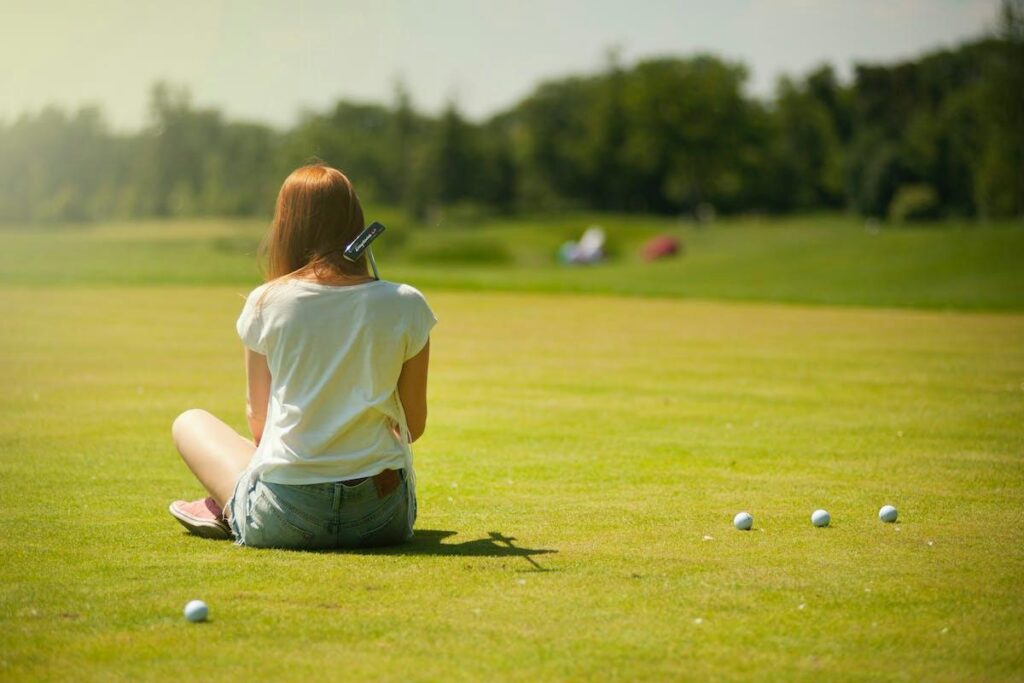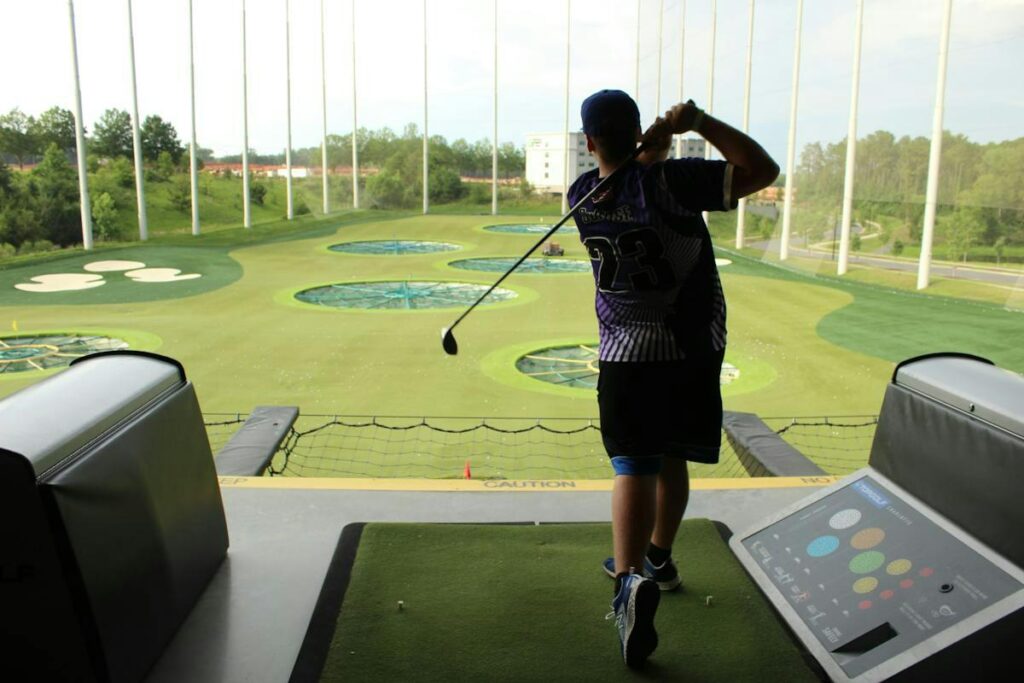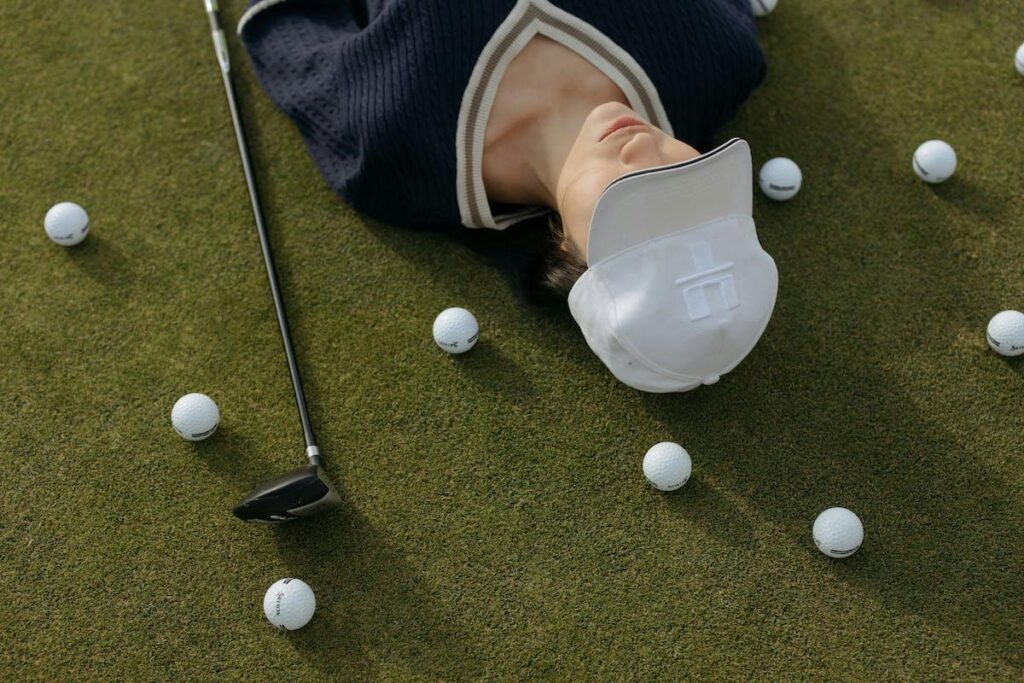
Introduction
Golf is not just a sport; it’s a way of life for many enthusiasts. However, the joy of hitting the perfect swing can sometimes be disrupted by the discomfort of lower back pain after golf.
In this article, we’ll explore the common causes of lower back pain after golf and provide valuable insights on managing and preventing this issue.
How Common is Lower Back Pain After Golf
Lower back pain after golf is more common than one might think. Studies reveal that some golfers experience discomfort or pain in their lower back at some point. This issue transcends age and skill level, affecting both professional golfers and amateur golfers.
According to epidemiological studies, lower back pain (LBP) from golf is responsible for between 18% and 54% of all recorded illnesses. This is why many researchers think it is the most common golf injury.
Common Causes of Lower Back Pain Associated with Golf

The causes for experiencing lower back pain after playing golf can vary, and understanding these factors is crucial for preventing and managing discomfort. Here are some common risk factors associated with lower back pain from golf swing:
Lack of Warm-up
Failing to warm up adequately before a round of golf can increase the risk of low-back pain. When golfers skip or skimp on this crucial step, they essentially send an unprepared body into a series of dynamic movements, setting the stage for potential issues, particularly in the lower back.
Overexertion
Excessive loads of force or overexertion during the golf swing can strain the muscles and structures of the lower back. It’s essential to find a balance between power and control to avoid putting undue stress on the lower back.
Weak Core Muscles
Insufficient strength in the core muscles can compromise stability during the golf swing, increasing pressure on the lower back.
Poor Flexibility
Inflexibility in the spine and lack of hip and thoracic mobility can contribute to lower back strain. Golfers with limited flexibility may experience discomfort, especially during the rotation and twisting movements inherent in the golf swing.
Repetitive Nature of the Golf Swing
Golf, often called a sport of precision and finesse, demands a high level of repetitive motions in its primary action—the swing. The golfer executes this movement repeatedly throughout a game, and the cumulative effect on the lower back cannot be overstated. The consistent stress placed on the muscles and joints during each swing can lead to fatigue and, over time, manifest as persistent lower back pain in golfers.
In the modern swing, popularized by Jack Nicklaus, the lower back and pelvis remain straight while the torso and spinal column rotate. The swing forces the spine to twist and hyperextend. Golfers generate 1,700 pounds of compressive stress in their backs during a swing; less than 1,300 pounds of force can cause disc herniation.
Impact of Improper Technique
Faulty mechanics during the swing, such as over-rotation, a misaligned spine, or poor weight distribution, can significantly amplify the strain on the lower back. Golfers unaware of these details may unknowingly subject themselves to unnecessary stress, setting the stage for discomfort and, in some cases, more severe injuries.
Anecdotal evidence from golf teachers has linked numerous swing postures to lower back pain. Avid golfers may experience lower back pain in golf due to trunk motion during the backswing and follow-through, lumbar hyperextension, and incorrect pelvic sequencing.
Ways to Manage Lower Back Pain After Golf

Hot and Cold Compress
One effective way to manage lower back pain after golf is through the application of hot and cold packs. The heating pads help relax muscles, while ice packs reduce inflammation. Alternating between hot and cold can provide relief and promote healing.
Rest from Pain-Inducing Activities
Rest is a fundamental aspect of recovery. Taking a break from activities that exacerbate the pain, including golf, allows the body to heal. Additionally, assessing and adjusting one’s golfing habits can prevent further strain on the lower back.
Massage
Massage therapy has proven benefits for relieving lower back pain. A skilled massage therapist can target specific muscles, reducing tension and promoting better blood flow. Regular massages can be an integral part of a golfer’s pain management routine.
Spinal Decompression
Spinal decompression is a technique that alleviates pressure on the spine, offering relief to those suffering from lower back pain. This can be achieved through various devices and methods, such as inversion tables or specific stretching exercises.
Medications
Over-the-counter pain relievers or prescription medications can be used to provide pain relief. However, it’s essential to use them cautiously and under the guidance of a healthcare professional to avoid dependency or adverse effects.
Stretches and Exercise
Engaging in targeted stretches and lower back pain exercises is crucial for strengthening the muscles around the lower back. A tailored routine, incorporating both flexibility-enhancing and muscle-strengthening physical activities, can significantly promote overall back health.
Ways to Prevent Lower Back Pain After Golf
Preventing golf-related lower back pain is preferable to managing it after it occurs. Adopting proactive measures can significantly reduce the likelihood of experiencing pain after a round of golf.
Warm Up
Warming up before a game is essential. Gentle stretches and cardiovascular exercises prepare the body for the physical demands of golf, reducing the risk of injury.
Improve Core Strength
A strong core is a golfer’s ally in preventing lower back pain. Incorporating exercises that target the core muscles can provide stability and support during the golf swing.
Maintain Spinal Mobility and Hip Flexibility
Maintaining flexibility in the spine and hips is crucial for preventing strain on the lower back. Regular stretching exercises can improve proper mobility, enhance range of motion, and reduce the risk of golf-related injury.
Learn to Swing Properly
Correcting the golf swing technique is paramount. Seeking guidance from a personal trainer to analyze proper form and refine your swing can prevent unnecessary stress on the lower back and the likelihood of injury.
Keep Your Swing Power in Check
While a powerful swing is desirable, balancing power with control is essential. Overexertion can lead to injuries, including lower back pain from golf swing. Focus on maintaining a controlled and well-balanced swing.
Don’t Let Lower Back Pain Stop You from Playing
For those already grappling with lower back pain, seeking professional guidance from a physical therapist or any other healthcare expert for appropriate lower back pain treatment is essential. Whether through physical therapy, targeted exercises, or other therapeutic interventions, addressing the issue quickly can contribute significantly to recovery and future prevention.
Conclusion
In conclusion, managing and preventing lower back pain after golf requires a holistic approach. Understanding the causes, adopting effective management strategies, and embracing preventive measures can significantly enhance golf performance. By prioritizing back health, recreational golfers can enjoy the game they love for years.
FAQs
What helps lower back pain after golf?
Several methods can help alleviate lower back pain after golf, including hot and cold compresses, rest, massage therapy, spinal decompression, medications, and targeted stretches and exercises.
How do you stretch your lower back after golf?
Effective lower back stretches after golf include the child’s pose, cat-cow stretch, seated forward bend, and knee-to-chest stretch. These simple exercises promote flexibility and relieve tension in the lower back.
How do I strengthen my lower back for golf?
To strengthen the lower back for golf, focus on core exercises, such as planks, bridges, and rotational exercises. Additionally, incorporating overall back exercises, like Superman and bird dogs, can contribute to a stronger and more resilient lower back.








